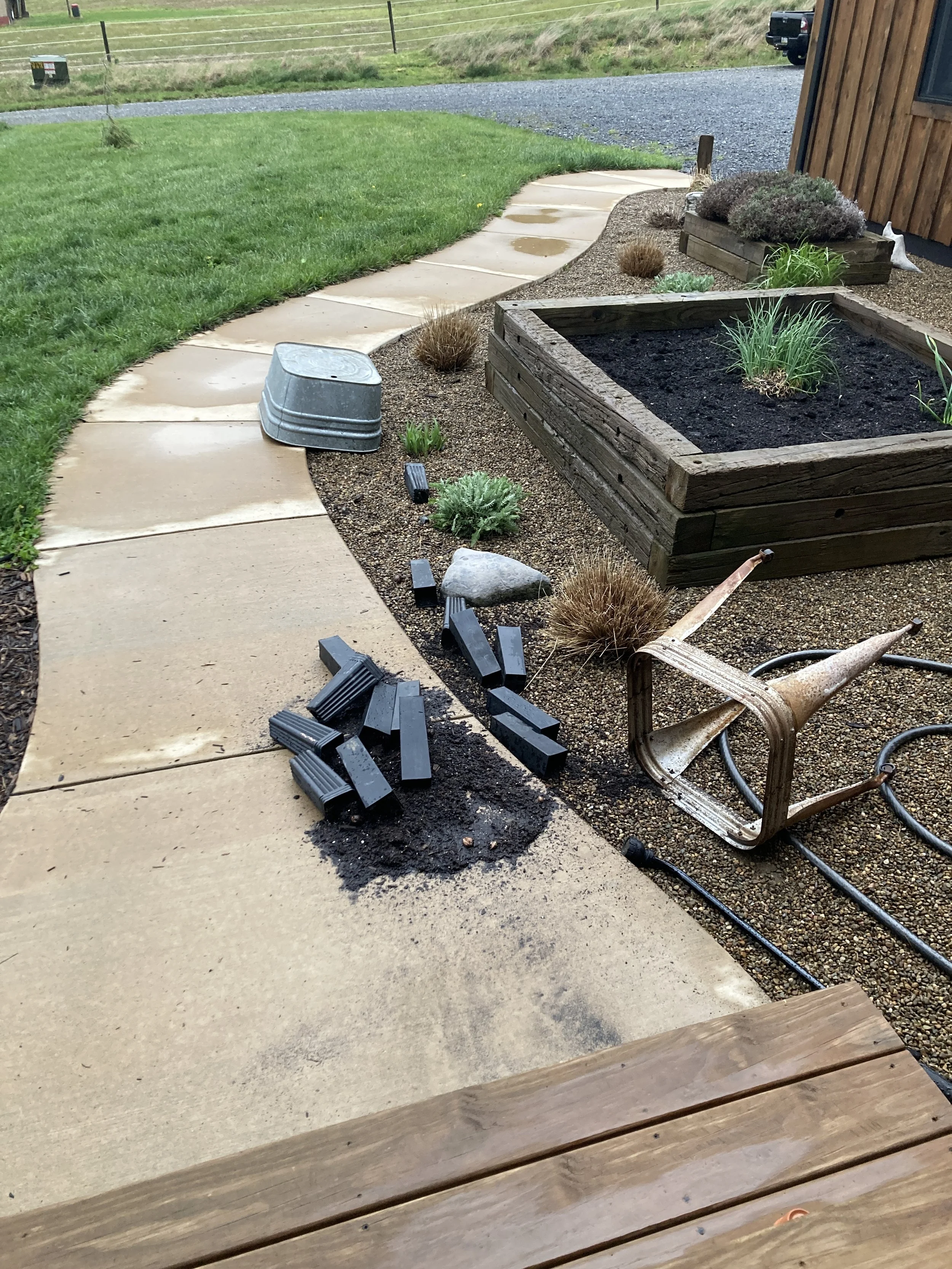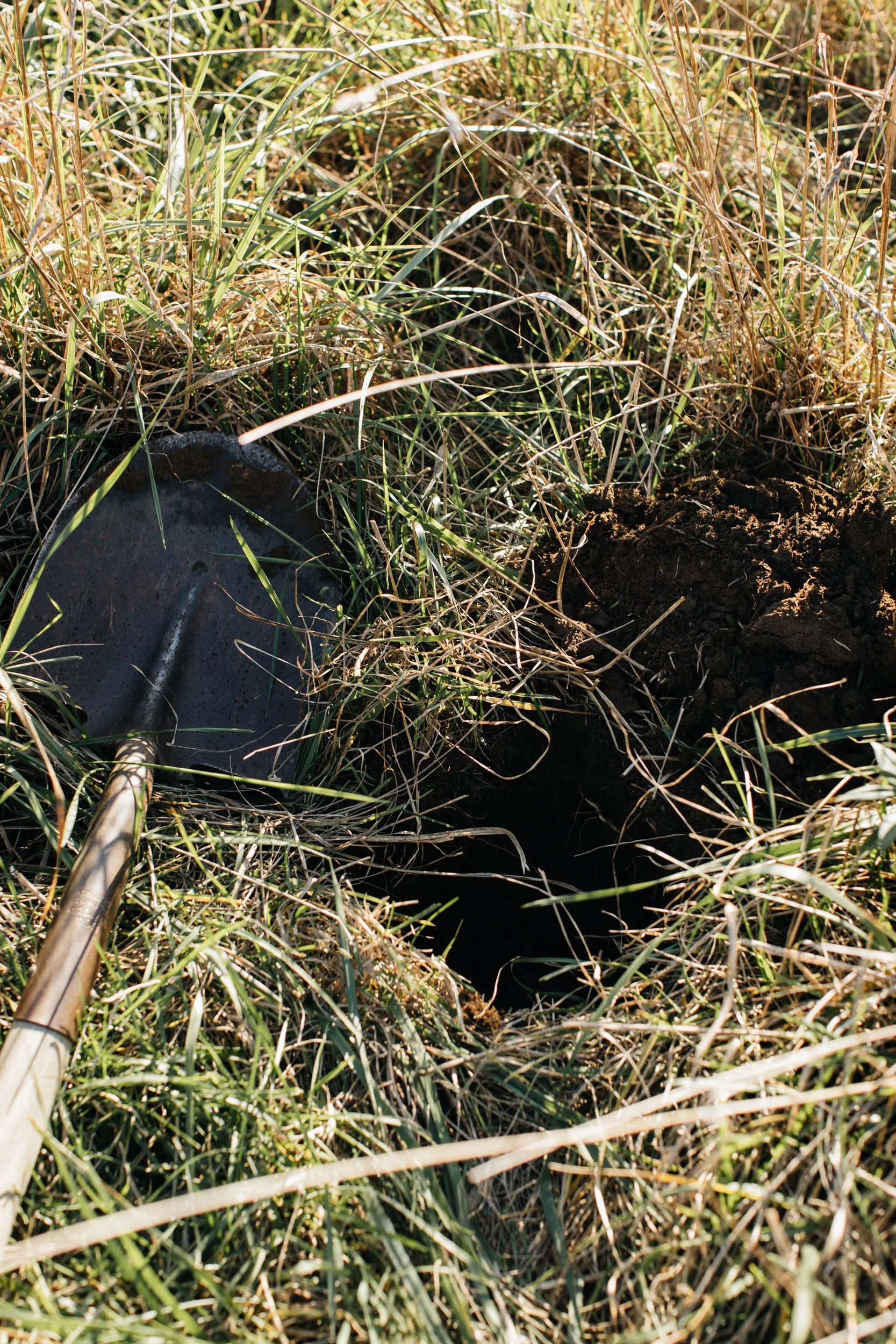Fall Oak Plantings Part I
Story time: I wrote a poem last fall, on November 6th to be exact, to help sort out some of the overwhelming feelings I was experiencing at that time, and the theme of it centered around seeds — gathering seeds, planting seeds, nurturing seeds through the season ahead of colder, darker months. Writing the poem was just the first step of the process. I also took those feelings literally and planted around 8 shagbark hickory nuts I had gathered, and tended to them through the winter’s snow and ice, seeing that they were moist but not soaking, getting cold enough to stratify but not frozen through. And then as winter started to transition into spring, I came across an abundance of red oak acorns along a gravel roadway that were germinating with no soil contact or place to properly grow and decided to carry a handful of them home and planted those as well. By late April, I had a tray of around 16 seedlings of hickories and oaks that were sending out their tap roots, and I carefully checked that all were viable and growing. I was elated and excited to see progress was happening after a long winter, and soon I was hopeful to witness their emergence of shoots and first leaves.
But on April 29th, a very strong line of storms would come through and wreak havoc. We did not receive any weather warnings about the strength and intensity of these storms, so I left my seedlings outside on our covered front deck in the vintage galvanized metal sink/tub I was using to hold them in. The strong wind gusts of the storm took and blew them right off the deck leaving the dirt and seedlings tossed in mess on our sidewalk.
In the aftermath, with rain still coming down as dusk was falling, I took the sopping soil from the sidewalk and tried to save all the seedlings I could. Unfortunately, at least half had lost their taproots in the violent upheaval. By mid June though my efforts proved to be not totally wasted to revive, as the eight remaining seedlings of red oaks and hickories sent up their shoots and had their first set of green leaves unfurling. I was so grateful these had made it, and hopeful they’d grow into especially resilient trees after surviving such a violent storm.
However, a squirrel would come along with a different thought about those seedlings. My son and I heard a commotion out on the deck one morning, and lo and behold a gray squirrel had just fled the scene after dining on the seedlings, tossing the soil about and leaving a mess of nibbled shoots and shells of the seeds which they had been growing from.
Once again, I gathered up soil and what seedlings I could find that still may be intact enough to grow, this time putting them in a spot that was more squirrel-proof along with a plastic owl to hopefully spook the squirrel away. I had only four seedlings remaining at this point. And then, two of those four (which were hickories) ended up withering through the hot and dry spell of our late summer, likely a result of my neglect to keep them properly watered while we were away on a vacation.
But, after all that, the two red oak seedlings remaining have made it. Small, but mighty. Two out of the 16 I had started with. I feel a bit of defeat for sure that more did not make it, especially with the emotional ties these seedlings carry for me. But also, two still made it through the storm and winds, a hungry squirrel, a hot and very dry spell; they are still here. And before the cold returns again, it is time to get them into the ground where they can really begin to set root.
Now, after the lessons learned from the previous few months events with these seedlings, I feel a little wiser to plan ahead to protect them and to better ensure their continued growth. I scoped out ideal sites in our meadow with conditions that should work well for them — full sun exposure and well-draining soils. I first dug them a hole — 2-3 times the width of their container, and just as deep. I placed them in, and carefully filled around, gently stepping on the soil to compact it a bit to keep the seedling in place and snug, but not stomping so that nutrients can still easily penetrate through to the roots. Then I pounded in a stake with a mallet and cut a length of hardware cloth wire fencing to attach to it to protect the seedling from hungry deer, which LOVE to devour young oak seedlings and saplings. This fence will remain (and will be replaced with a larger fence as needed) over the next 7 years or so until enough growth is established that the red oak tree can survive deer browsing/be too large for bucks that would want to rub their antlers on it to cause significant damage.
Another precaution I’m taking is to sprinkle a little mole/vole repellent — I like to use garlic-based and even just cut up some cloves of my own to put around the soil of the seedlings. This should help deter rodents in the area from feeding on the roots and damaging them.
And from now on it’s all about checking in: seeing how the cold season effects the seedlings, supplementing nutrients in the spring and summer to aid their growth, watering them when it’s dry for at least the first year or two here until root systems establish, and much patience. It’s still a long road ahead where they could succumb along the way, but what a satisfaction it is to get to this stage, and still have such a strong hope after all the setbacks with visions of grandchildren maybe climbing their trunks someday, and being able to tell that generation how they were grown and born out of dark times and made it through many adversities.
And as the cold season descends upon us again, I am gathering more acorns to plant — read more on that in part II in the next post!






